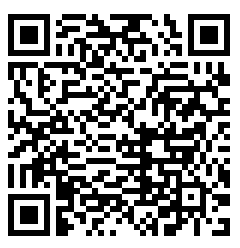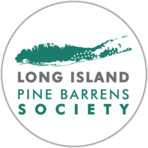For over a decade, the Long Island Pine Barrens Society, with support from the National Grid Foundation, has hosted the “Middle School Kids Go To College” program. Since the beginning, middle school classrooms across Long Island have come together to research Long Island’s water quality crisis and create innovative solutions to address our problems as a community.
The problem:
Long Island’s waters are at a crisis point. Long Island is a federally-designated sole-source aquifer region, meaning that its 2.8 million residents rely on the groundwater contained within its underground aquifers as the sole source of their drinking water. Unfortunately, scientists have reported a dramatic decline in the quality of our water. The main culprit is nitrogen pollution, most notably from septic systems and cesspools. Large swaths of Long Island remain unsewered, and wastewater is instead treated by residential cesspools or septic systems . In Suffolk County alone, there are more than 360,000 individual systems in the ground. These antiquated systems were never designed to remove nitrogen. Nitrogen-laden wastewater flows from our houses, into our drinking water aquifers and eventually, ends up in our bays, lakes, streams and rivers.

Long Island’s Aquifer System
In our surface waters, the excess nitrogen promotes the growth of harmful algae blooms, which are having devastating impacts on our environment and economy. These blooms have caused massive die-offs of fish, turtles and shellfish. Some blooms also produce toxins, a public health threat, resulting in the closure of our beaches and shellfish beds in the summer, when tourism is high. Excess nitrogen in our waters has also weakened the roots of our salt marshes, causing the plants to die and fall off. Salt marshes serve as an important buffer against storm surge and flooding. Weakened salt marshes cause the island to be less resilient against storms, which results in catastrophic coastal flooding.

In addition to nitrogen, pesticides, pharmaceutical drugs and volatile organic compounds have also been detected in our groundwater supply at alarming levels.
The good news is that we know what the problem is and we know how to fix it. In areas where wastewater infrastructure has been improved, we have seen toxic algae blooms cease, beaches re-open, and the restoration of eelgrass and shellfish populations. New septic systems with nitrogen-removing technology have been developed and when installed, can reduce nitrogen in effluent by up to 90%. Each of the 360,000 individual systems that are polluting our waters will need to be replaced with this new technology.
VIDEO: What is nitrogen pollution?
VIDEO: Where does it go when I flush?
How the program works:
- We work with Long Island teachers to build authentic Long Island water quality education into their classrooms. Lessons are adapted to work with New York State standards and are multi-disciplinary. We have a team of veteran teachers who are able to offer guidance to new teachers.
- After students have learned about Long Island’s waters, they work individually or in teams on independent research projects to create their own innovative solutions to Long Island’s water quality problems.
- A select number of participating students join us at Stony Brook University, where they present their research projects to their peers, Stony Brook University professors and Long Island Pine Barrens Society staff. Projects are presented through posters or by PowerPoint/Video presentation. Students receive lunch and hear a lecture from world-renown marine scientist and professor, Dr. Christopher Gobler of Stony Brook University’s School of Marine and Atmospheric Sciences. Student projects are evaluated using science standards aligned with the New York State Department of Education. Finalists are chosen and are later awarded at a ceremony where students are able to meet with and present their ideas to local elected officials. Students receive awards from the National Grid Foundation and proclamations from the local officials. The awards ceremony is often featured by local news stations.
- Project Rubric
Examples of Winning Presentations:
VIDEO: Winners of the 2020 “Middle School Kids Go To College” Competition
VIDEO: Winners of the 2021 “Middle School Kids Go To College” Competition
VIDEO: Winners of the 2022 “Middle School Kids Go To College” Competition
VIDEO (forthcoming): Winners of the 2023 “Middle School Kids Go To College” Competition
Winners of the 2024 “Middle School Kids Go To College” Competition:
- “How Does Nitrogen Affect Our Beaches?” by Ariana Cortes
- “How do Certain Household Products Affect Our Water Quality?” by Devin McAvoy and Brody Beach
- “Why is Long Island Water Green and Not Clear?” by Callie Thiess and Layla Santana
- “Groundwater Contamination” by Liam Earley, Aven Franco and Grace Randazzo
- “Taking Samples of Long Island Water” by Vincent Mazzie and Anthony Mantia
- “Aquification of Medication” by Anaya Bhatti and Kaylee Read
- “Laundry Detergent: Clean Clothes, Dirty Water” by Darren Loeffler and Luca Mastrangelo
(Not pictured: “Showers vs Baths” by Skylar Dunkel and “Microbead Madness” by Sebastian Santos and Luca Mastrangelo)
The full Awards Ceremony is available for download by request at info@pinebarrens.org.
Previous winning topics have included:
- The impact of pharmaceutical drugs on our water quality
- Ammonia’s negative effects in our waters
- Pesticide Pollution
- Native Gardening
- 1,4-Dioxane Pollution
- Water fountain water quality analysis
- The impact of electronic waste on water quality
- The dangers of high nitrogen
- Coastal pollution
- The use of kelp in preventing algal blooms
- Toxic chemicals found in our waters
- The potential impact of cemeteries on our water quality
- The impact of golf courses on our environment
- How improper disposal of PPE (gloves, masks) impacts our environment
Who is able to participate?
- Middle School classrooms or clubs with students in grades 6-8
- Homeschool groups or students in grades 6-8
- Outside school clubs with students in grades 6-8
- All participating students must be from Nassau or Suffolk Counties, New York
Registration and deadlines:
- Please reach out to info@pinebarrens.org for more information or to register in the program.
- The deadline for research projects is May 28, 2024.
- The lecture with Dr. Christopher Gobler of Stony Brook University will be held May 20, 2024.
- The awards ceremony will be held June 8, 2024.
Resources for Educators:
There are resources are available for Long Island educators to introduce authentic Long Island nature lessons into their classrooms. These resources cover Long Island’s geology, biology and ecology with a special focus on the Long Island Pine Barrens and Long Island’s water resources. Please click here.
Recently the School of Marine and Atmospheric Sciences at Stony Brook University has also launched a first of its kind application with which the water quality across Long Island can be viewed at any time. More information about the app can be found here.
To access to the Long Island Beach and Water Quality App:
- Install ArcGIS AppStudio Player from Google Play, the Apple App Store, or the Microsoft Store. This is free.
- Open your camera and scan the following QR code. The Player will download the app and open it. That’s it. No login is required.
QR Code for app

While not related directly to water quality on Long Island, there exists a new phone application from the K. Lisa Yang Center for Conservation Bioacoustics, called BirdNET Sound ID. This new app uses algorithm based Machine Learning to recognize and identify specific bird calls that can be recorded in the app. Through this, people unfamiliar with avian study can easily identify the birds in their area based on sound alone.
To access BirdNET Sound ID
- Install the application either through the Apple Store or the Google Play Store
- The software can also be accessed from their website via desktop.
Media
VIDEO: Dr. Chris Gobler’s 2023 Lecture
VIDEO: Middle School Kids Go To College Competition Overview
VIDEO: News 12 Long Island Coverage of 2020 Competition
VIDEO: News 12 Long Island Coverage of 2019 Competition
Newsday Coverage of 2019 Competition
The Long Island Pine Barrens Society is proud to offer this program thanks to the generous support of the National Grid Foundation. Thanks to their support throughout the years, Long Island has developed the next generation of future stewards of our environment.




















